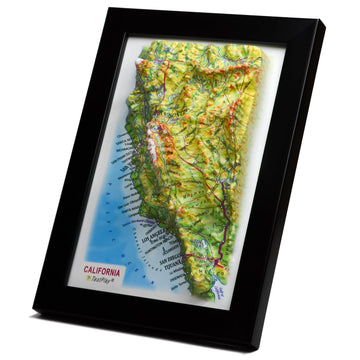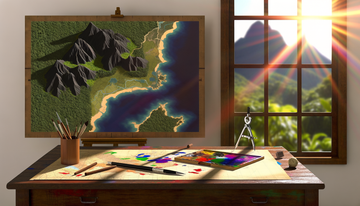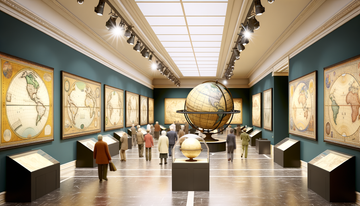Unlock Interactive Learning: The Educator's Guide to Using Globes in the Classroom
In an age dominated by digital screens and flat maps displayed on whiteboards, the humble globe might seem like a relic of the past. However, for educators seeking truly interactive, tactile, and comprehensive tools to teach geography and spatial reasoning, the globe remains an invaluable resource.
Teaching geography effectively goes far beyond memorizing capitals and countries; it involves fostering an understanding of our interconnected world, the dynamics of physical landscapes, and the abstract concepts of distance, direction, and scale. The challenge for teachers today is finding methods that make these concepts tangible and engaging for diverse learners.
This post serves as your authoritative guide to harnessing the power of globes in your classroom. We will explore the enduring benefits of using globes, delve into practical, interactive activities suitable for various age groups, discuss how to integrate globe usage seamlessly into your curriculum, and offer tips for choosing and maintaining these essential teaching tools.
Our solution? Rediscovering and strategically implementing globes to provide students with a foundational, concrete understanding of Earth's geography that digital tools often cannot fully replicate, transforming passive observation into active, hands-on exploration.
Why Globes Still Matter: The Enduring Benefits
In a world of sophisticated mapping software and virtual reality tours, why should educators bother with a physical sphere? The answer lies in the unique pedagogical advantages that globes offer, addressing fundamental aspects of geographic understanding in ways flat maps or screens simply cannot.
A globe is the only accurate representation of the Earth's spherical shape. This fundamental truth is crucial for students to grasp from an early age. Understanding that the Earth is a sphere impacts comprehension of concepts like gravity, seasons, day and night cycles, and global wind patterns.
Globes provide an unparalleled sense of scale and proportion. Unlike flat maps which distort sizes and distances, especially towards the poles, a globe maintains accurate relationships between landmasses and oceans. This allows students to develop a more intuitive feel for the vastness of oceans compared to continents or the relative size of countries.
Perhaps most significantly, globes are inherently tactile and interactive. Students can physically touch, spin, and manipulate a globe. This hands-on interaction transforms geography from an abstract visual exercise into a physical experience, enhancing engagement and memory retention, particularly for kinesthetic learners.
Furthermore, globes are powerful tools for developing spatial reasoning skills. By tracing routes, measuring distances (using a string or flexible ruler), and comparing locations, students build a mental model of global geography. They learn to think about relative location, proximity, and global connections in a concrete way.
Globes also offer immediate visual learning opportunities. Different types of globes can highlight political boundaries, physical topography, climate zones, or even historical data, providing rich layers of information accessible at a glance. They serve as a constant, three-dimensional reference point in the classroom.
Finally, globes help students understand the concept of a "Great Circle" – the shortest distance between two points on the Earth's surface. This is a concept that is incredibly difficult to visualize on a flat map but becomes clear when demonstrated on a sphere. Understanding Great Circle routes is essential for grasping global travel, trade routes, and even atmospheric science.
Choosing the Right Globe(s) for Your Classroom
Not all globes are created equal, and the best choice depends on the age of your students, your curriculum focus, and your budget. Investing in a few different types or sizes can significantly enhance the range of activities you can conduct.
Consider the primary purpose. Do you need to teach political boundaries, focusing on countries and capitals? A political globe with clear country colors and labels is essential. Are you focusing on physical geography, landforms, mountains, and oceans? A physical globe, often with raised relief or color-coding for elevation, would be more suitable.
Think about size and durability. A large floor globe can be a central classroom feature for whole-group lessons and demonstrations. Smaller desk globes or inflatable globes are excellent for group work, individual exploration, and are often more robust for frequent handling by younger students. Inflatable globes are particularly good for active games and are safer if dropped.
Look for features that align with your teaching goals. Some globes illuminate, which can be used to demonstrate day and night or simply make labels easier to read. Globes with raised relief provide a tactile sense of elevation changes. Consider globes that show ocean floor topography for marine studies.
Here are key factors to consider when making your selection:
- Student Age Group: Younger students benefit from larger, simpler globes with clear images and perhaps raised relief for tactile exploration. Older students can handle more detailed political and physical globes with smaller text and complex information like latitude and longitude lines.
- Type of Information Displayed: Decide if you need political, physical, thematic (e.g., climate, population), or a combination. Many globes are 'dual-purpose' showing political boundaries when lit and physical features when unlit.
- Size and Scale: A larger globe offers more detail and is better for group viewing. Smaller globes are practical for individual or small group work. Consider how much space you have.
- Durability: Classroom environments require sturdy materials. Look for globes made from robust plastic or composite materials. Inflatable globes are surprisingly durable and very portable.
- Features: Does the globe illuminate? Does it have raised relief? Are latitude and longitude lines clearly marked? Does it have an axis or a stable base?
- Budget: Globes vary widely in price. Determine your budget and look for the best quality and features within that range. Sometimes, grant money or school funding can be allocated for quality classroom resources like globes.
- Quantity: One large globe is great, but having several smaller globes or a mix allows for simultaneous student exploration and diverse activities. Consider purchasing a set if possible.
Selecting the right globe is an investment in your students' geographic literacy. Choose wisely to maximize its potential as an interactive teaching tool.
Interactive Activities Using Globes in the Classroom
This is where the real magic happens. Moving beyond simply pointing out locations, globes can be used for a vast array of engaging, hands-on activities that solidify geographic concepts and connect learning to the real world.
Basic Exploration and Identification
Start with the fundamentals. Have students spin the globe and point to oceans and continents. Use different colored sticky notes or dry-erase markers (on appropriate globe surfaces) to mark locations as they are learned.
Ask students to find specific countries, capitals, or major cities. Turn it into a game: "Find five countries in Africa," "Locate the capital of Brazil," or "Point to the longest river." Use timers to add excitement or work in teams.
Introduce the concept of the Equator, Prime Meridian, North Pole, and South Pole. Have students trace these imaginary lines and understand their significance as reference points for location and time.
Understanding Spatial Relationships and Scale
Comparing sizes: Use string to measure the circumference of the Earth at the Equator versus near the poles (though technically distorted by the projection onto a 2D map, the concept of how much distance "one degree" represents varies with latitude can be introduced). Compare the apparent size of Greenland on a flat map to its true size relative to Africa on a globe.
Proximity: Ask students to find countries that are neighbors or oceans that border specific continents. Use phrases like "north of," "south of," "east of," and "west of" to build directional language skills.
Trace distances: Use a piece of string or a flexible measuring tape to find the distance between two major cities or two continents. Compare this to distances measured on a flat map and discuss the differences due to distortion. This activity is powerful for illustrating the inaccuracy of flat maps for distance representation.
Latitude, Longitude, and Coordinate Systems
Introduce the grid system of latitude and longitude using the globe. Explain that these are like addresses for locations on Earth. Use dry-erase markers to draw specific lines of latitude (parallels) and longitude (meridians).
Have students find locations based on given coordinates (e.g., find the city near 40°N, 74°W). Conversely, have them identify the approximate coordinates of known locations.
Create a coordinate scavenger hunt where students must locate places by finding where specific latitude and longitude lines intersect. This turns an abstract concept into a concrete, interactive puzzle.
Exploring Great Circle Routes
This is a prime example of a concept best taught with a globe. Use a string stretched tautly between two points on the globe (e.g., New York and Tokyo). Show how the string arcs over the northern Pacific, demonstrating the shortest path is not a straight line on a flat map but follows a curve on the sphere.
Compare the Great Circle route on the globe to what looks like a straight line on a flat map. Discuss why airplanes and ships often follow these curved paths to save time and fuel.
Have students predict Great Circle routes between various pairs of cities or continents and then test their predictions with the string. This encourages critical thinking about global geography.
Understanding Time Zones
Use the globe and a single light source (like a lamp or flashlight) to represent the sun. Show how spinning the Earth creates day and night.
Explain that time zones are based on longitude and the Earth's rotation. While a simple globe may not show time zone boundaries explicitly, you can use the lines of longitude (meridians) to explain the concept of 24 time zones, roughly 15 degrees apart.
Ask questions like, "If it is noon where the light is brightest, what time is it on the exact opposite side of the globe?" or "If it is 2 PM in London (on the Prime Meridian), is it earlier or later in a city to the east? How about to the west?"
Linking Geography to Other Subjects
Science: Use the globe to model the Earth's rotation and revolution around the sun (using the lamp again) to explain seasons and day/night cycles. Discuss ocean currents and major climate zones by locating them on a physical or thematic globe.
History: Trace historical exploration routes (like those of Columbus, Magellan, or early aviators) on the globe. Locate significant historical sites, battlefields, or origins of ancient civilizations. Discuss how geography influenced historical events.
Literature: As you read stories set in different parts of the world, locate those places on the globe. Trace character journeys. Discuss how the setting influences the story. This makes the literature come alive and provides geographic context.
Culture: Locate the origins of foods, holidays, music styles, or languages discussed in class. Explore where different animal species live or where major religions originated and spread.
Current Events: Keep the globe near a news source. When a newsworthy event occurs in a specific country or region, immediately locate it on the globe. This helps students connect abstract news reports to a concrete place on Earth and understand global interconnectedness.
Mapping and Comparison Activities
Use a physical globe and a political globe side-by-side. Have students compare them. What do they notice? How do physical features (like mountains or rivers) relate to political boundaries? Discuss why borders might follow rivers or mountain ranges.
Create "travel itineraries." Have students plan a trip around the world, identifying the countries and continents they would visit, considering distances and time zones.
Use dry-erase markers on laminate globes to draw migratory paths of animals, trade routes, or even fictional journeys. Students can actively participate in creating their own geographic representations.
Globe Scavenger Hunts and Challenges
Prepare a list of clues (e.g., "Find the country shaped like a boot," "Locate the desert that covers most of North Africa," "Find the capital city of the largest country in South America"). Students use the globe to find the answers.
Create team challenges where groups compete to find the most locations or answer the most geographic riddles using the globe within a time limit. This fosters collaboration and friendly competition.
These activities demonstrate that a globe is far more than a static model; it is a dynamic tool for exploration, discovery, and building essential geographic literacy and spatial reasoning skills. The hands-on nature makes the learning process memorable and deeply engaging.
Integrating Globes Seamlessly into Your Curriculum
To maximize the impact of globes, they should not be isolated tools used only during a dedicated geography unit. Instead, weave globe usage throughout the academic year, connecting it to various subjects and learning objectives.
Keep the globe accessible. Place it in a prominent location where students can easily see it and ideally interact with it regularly. A learning center dedicated to geography, featuring the globe, maps, and relevant books, can be very effective.
Align globe activities with curriculum standards. Most geography standards, even at elementary levels, require students to identify locations, understand spatial concepts, and interpret geographic data. Globes directly support these objectives.
Use the globe as a regular reference tool. When mentioning a place in a science lesson about ecosystems, a history lesson about colonization, or a current events discussion, pause to locate it on the globe. This reinforces location knowledge and global awareness constantly.
Combine globes with other resources. Use globes alongside flat maps to discuss the differences and distortions. Integrate them with digital tools; for instance, locate a place on the globe and then explore it further using online satellite imagery or virtual tours. This multi-modal approach caters to different learning styles and provides a comprehensive understanding.
Encourage student-led exploration. Once students are familiar with basic globe usage, give them open-ended tasks like "Explore a continent you know nothing about and report three interesting facts you learned by looking at the physical and political details" or "Choose two countries on opposite sides of the world and research how their climates differ based on their location relative to the Equator."
Remember that teaching with a globe is about building fundamental geographic understanding and spatial literacy. It complements, rather than replaces, other teaching tools and methods. By integrating it thoughtfully and frequently, you provide students with a powerful foundation for understanding their place in the world.
Troubleshooting and Tips for Classroom Globes
Owning and using classroom globes comes with practical considerations. A little planning and maintenance can ensure your globes remain valuable tools for years to come.
Storage is key. Protect globes from direct sunlight, which can cause fading and damage over time. Store larger globes on stable stands and smaller ones on shelves or in designated bins to prevent them from rolling or being knocked over. Consider covering them when not in use, especially if they are exposed to dust.
Handle with care. Teach students how to handle the globe properly – spinning gently, avoiding excessive pressure, and not using sharp objects near the surface. For younger grades, inflatable globes might be a more robust option for frequent, less supervised use.
Cleaning and maintenance depend on the globe material. Most globes can be wiped clean with a soft, damp cloth. For laminate globes designed for dry-erase markers, use appropriate cleaners to avoid staining. Check the stand and axis periodically to ensure they are stable and the globe spins smoothly.
Managing multiple students using one globe can be a challenge. Establish clear rules for taking turns and interaction. Use smaller globes for group activities or individual exploration to reduce congestion around a single large globe. Sometimes, simply having the globe visible in the classroom encourages spontaneous learning and discussion among students during free time.
Don't be afraid to get creative if your globe is missing features you need. Use sticky notes to add labels, draw temporary lines with dry-erase markers, or create paper cutouts to represent concepts like tectonic plates or ocean currents, taping them lightly to the globe's surface.
By treating your globes as valuable, interactive resources and following simple care guidelines, you ensure they remain effective tools for countless geographic adventures in your classroom.




